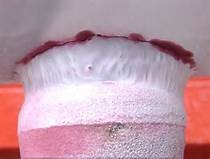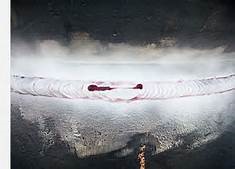Liquid Penetrant Inspection
Liquid penetrant inspection is a non-destructive method for testing surface-breaking defects in all non-porous materials. It is most commonly used for non-ferrous materials.
LPI is based upon capillary action, where low surface tension fluid penetrates into clean and dry surface breaking discontinuities. Penetrant may be applied to test components by dipping, spraying or brushing and can be either visible or florescent. After an adequate penetration time (dwell time) has been allowed, the excess penetrant may be carefully removed and a developer applied. The developer helps to draw penetrant out of the flaw so that indication becomes visible.


Limitations
Liquid Penetrant requires a smooth clean surface all materials must be clean of grease, dirt, Paint, or scale before inspection can begin. Temperature limitations are between about 3 degrees Celsius and 50 degrees Celsius.